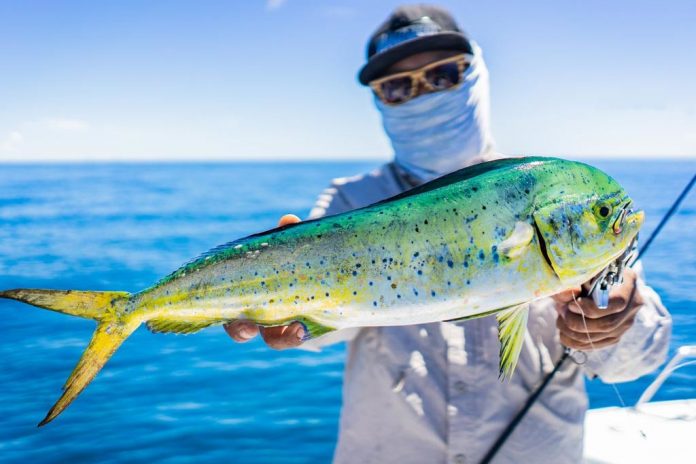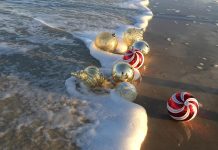(Oranjestad)—If you’re ever planning on snorkeling during your vacation on Aruba, you may spot fish that you can’t recognize. One of these may be the “Dorado”, a common fish that swims all year long in the waters of Aruba. Here’s some information about the beloved Dorado.
Dorado has many different names it can be referred to. Dral, Dorao, Drals, Drado, are some of them in Papiamento. In English, it is also called Mahi Mahi, Dolphinfish, or Dorado. It’s a good example to reflect on why there can be many names. The same fish becomes known by different common names, why? Common names come only when a group of people, to understand each other, assign a name to a fish. Mahi Mahi, for example, comes from Hawaii and means “very strong”. Dorado is based on Spanish and refers to the golden yellow color that the fish shines with under the sun. Why it’s called Dolphinfish in English is not well defined and while there are several stories around this, none have been confirmed.
Dorado is found in all tropical to subtropical oceans around the world. Dorado is very popular both for recreational fishing and for consumption. It is known among fishermen as an exciting catch and a fish that puts up a good fight. Its meat is very good for consumption and it is also commercially fished for that reason.
They grow very fast, up to 2.7 inches (almost 7 cm) per week. They can live up to a maximum of 5 years although very few reach that age. Most become adults within 1 year but many become reproductive after just 5 or 6 months and reproduce very quickly too.
They live in open water on the surface most of the time. Many fish seek them around sushi lines or floating objects on the sea. Often you will find a group landing together and if you keep a male on the line, often the others will stay close or can keep the group interested by giving shrimp or squid.
Description:
Dorado has a distinctive body. It has a large tail and its long, flat body ends in a large blunt head. Its color of yellow and green or blue makes it immediately recognizable, even with small variations in these colors.
Dorado has clear differences between adult females and males. The male is larger and can easily reach 50 to 80 pounds and has a much flatter head compared to the female. Therefore, male Dorados are also called “bull Dorado”.
Dorado can be found in our waters around the island all year round, but there are periods when it is easier to find than others.
Source: The Department of Agriculture, Livestock, and Fisheries (Santa Rosa).
















